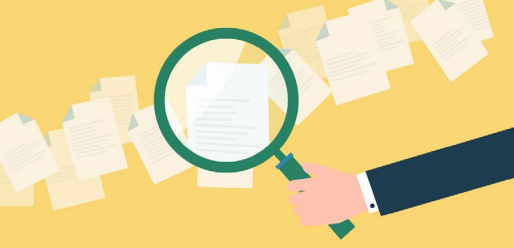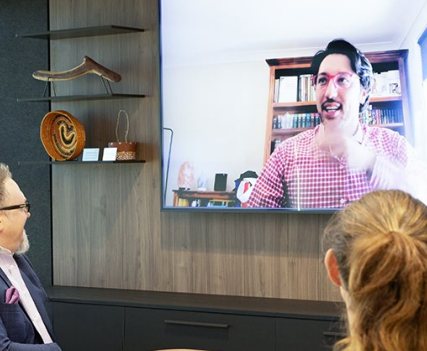-
Governance and agency responsibilities
The Digital Transformation Agency (DTA) is the owner of the Policy and its four supporting standards. This includes oversight of day-to-day operations, updates to the Policy and standards, and the development of supporting guidance to help agencies apply them in practice.
The DTA is responsible for:
- Developing and maintain the DX Policy, supporting standards, and guidance material
- Assessing compliance through touchpoints under the IOF
- Collecting and analysing compliance data to inform reporting
- Reviewing and deciding on exemption requests
- Reporting outcomes and compliance to the Secretaries’ Data and Digital Committee (SDDC) and Digital Leadership Committee (DLC).
Agencies with services in scope of the DX Policy are responsible for:
- Applying all relevant requirements of the DX Policy and its supporting standards
- Considering the end-to-end digital experience when designing, developing, implementing, and operating services
- Ensuring services are user-friendly, inclusive, adaptable, and measurable
- Designing new services to integrate with existing access points such as myGov, wherever possible
- Determining whether incorporating a new service into an existing access point or if it is necessary to create a new one and migrate current access points into it.
- Implementing all five criteria of the Digital Performance Standard for in-scope investments
- Engaging with the DTA through relevant IOF touchpoints and providing required information to assess compliance
- Contacting the DTA with questions about applicability, compliance, or to apply for an exemption
Exemptions
The DTA acknowledge that some agencies may be unable to meet specific requirements under one or more of the standards mandated by the Policy due to a range of circumstances. In these cases, agencies should contact the DTA to apply for an exemption. The DTA will provide all necessary information, forms and supporting documents for an exemption application.
Exemptions will not apply at a ‘whole of policy’ level. This means your service will not be made exempt from complying with the DX Policy in its entirety.
Further information can be found in the Compliance, reporting and exemption guide.
For additional support and resources, please contact standard@dta.gov.au
-
-
Supporting material
-
I am an Australian business
I want support and advice for working with and engaging government. -
Tell us what you think and help us make it better.
-
test
content test
dfs
ffdsfdsfsfd
-
The digital.gov.au website is managed by the Digital Transformation Agency (DTA). In most instances, the DTA Privacy Officer will be the first point of contact for any queries, requests or issues relating to the site.
-
A privacy-by-design approach is built into digital.gov.au using best practice to comply with the Privacy Act. This approach embeds the latest security requirements, while providing for a fast, intuitive and inclusive user experience for all.
This summary sets out key points about how digital.gov.au handles the collection of information, including personal or sensitive information.
Note: no information will be requested or published that is classified above Official Sensitive.
When any information is collected, held, used, disclosed or stored, it is done so in accordance with the:
- Privacy Act 1988 (Cth) (Privacy Act)
- Australian Privacy Principles (APPs)
- Privacy (Australian Government Agencies – Governance) APP Code 2017 (the Code).
More information can be found in the DTA's main privacy policy.
Collection
digital.gov.au may collect or hold personal information that is reasonably necessary for, or directly related to, the performance of its functions and activities. This may include your name, phone number, email and address and information about your interactions with the site through our services or the pages you visit.
Note: Personal information will usually be collected directly from you, unless there is an exception in the Privacy Act that permits digital.gov.au to collect personal information from a third party.
Site feedback
There is the opportunity to make enquiries or provide feedback, commentary and comments throughout the site. This drive improvements and new features. No personal or identifying information is required from you to participate.
Site interactions
Some data may be collected that includes details about your interactions with digital.gov.au, site features or the pages you visit, for example Google Analytics, the Custom Satisfaction Tool, and so on. This is collected as de-identified information, with no capacity to trace the interactions back to you.
Storage and protection
All information received by the DTA is held in secure online systems. Physical access to our offices is restricted and limited to authorised personnel only. Staff have access to personal information on a need-to-know basis only.
When personal information no longer needs to be retained as part of a Commonwealth record, it is generally destroyed in accordance with the Archives Act 1983.
Use and disclosure
Your personal information will primarily be used and disclosed for the purpose for which it was collected, unless you give your consent.
However, there may be a requirement to use or disclose your personal information for another purpose in certain circumstances.
For example, if required or permitted by law or for a purpose related to, or directly related to, the purpose of collection where you would reasonably expect that this to occur.
Sometimes your personal information will be passed to other government agencies or organisations such as the Australian Taxation Office or Department of Home Affairs, including overseas governments or organisations, for the purpose of assisting with your enquiry or application.
Access and correction
You can request access to, or correction of, your personal information by contacting digital.gov.au using the details below.
All request for access or correction will be actioned quickly, unless there is a sound reason under law to refuse.
If your personal information is not corrected, reasonable steps will be taken to associate a statement with your file upon request.
Complaints
Your privacy is taken seriously. All efforts have been made to protect your personal information.
To make a complaint about how your personal information is handled, please contact digital.gov.au using the details below.
How to contact us
- Telephone: 02 6120 8595
- Email: privacy@dta.gov.au
- Mail: Privacy Officer
Digital Transformation Agency,
PO Box 457
Canberra City
ACT 2601
Privacy Impact Assessments
The Australian Government Agencies Privacy Code requires agencies to conduct a Privacy Impact Assessment (PIA) for all high privacy risk projects. A high privacy risk project is one that involves a new or changed way of handling personal information that is likely to have a significant impact on the privacy of individuals.
Currently there are no projects associated with this site, that have required a PIA. If this should occur in the future, it will be captured on this page as part of a digital.gov.au Register of Privacy Impact Assessments.
A PIA is a systematic assessment of a project that identifies the impact that the project might have on the privacy of individuals. It sets out recommendations for managing, minimising or eliminating that impact.
PIAs assess a project’s risk of non-compliance with privacy legislation and identifies controls to mitigate the risk. A PIA is much more than a simple compliance check. It should ‘tell the full story’ of a project from a privacy perspective, going beyond compliance to consider the broader privacy implications and risks, including whether the planned use of personal information in the project will be acceptable to the community. PIAs are key to building community trust and have a range of other benefits, such as demystifying the project and its objectives.
-
Historical training
To get a copy of the following historical training, contact observatory@dta.gov.au:
- Google Analytics Privacy and Security Refresher
- Google Cloud Platform Products
- Future proofing for Google Analytics 4
- Setting up your GA4 Report Library
- Deep Dive into GA4 Reporting & Visualisations
- Google Analytics 4 Event Tracking
- Migrating Looker reports to GA4
- Overview of Google Tag Manager
- Campaign (UTM) Tracking in GA4
- Deep dive into Looker Studio
- What's new in GA4
- Universal analytics data export
Monthly training
Find out more about monthly training and register for an upcoming event, visit Eventbrite.
Google training
Google offers a range of free training courses and certification programs from beginner to advanced levels.
Visit Google Marketing Platform Academy, Skill Shop and Google Cloud Courses to find out more.
Connect with the digital community
Share, build or learn digital experience and skills with training and events, and collaborate with peers across government.





